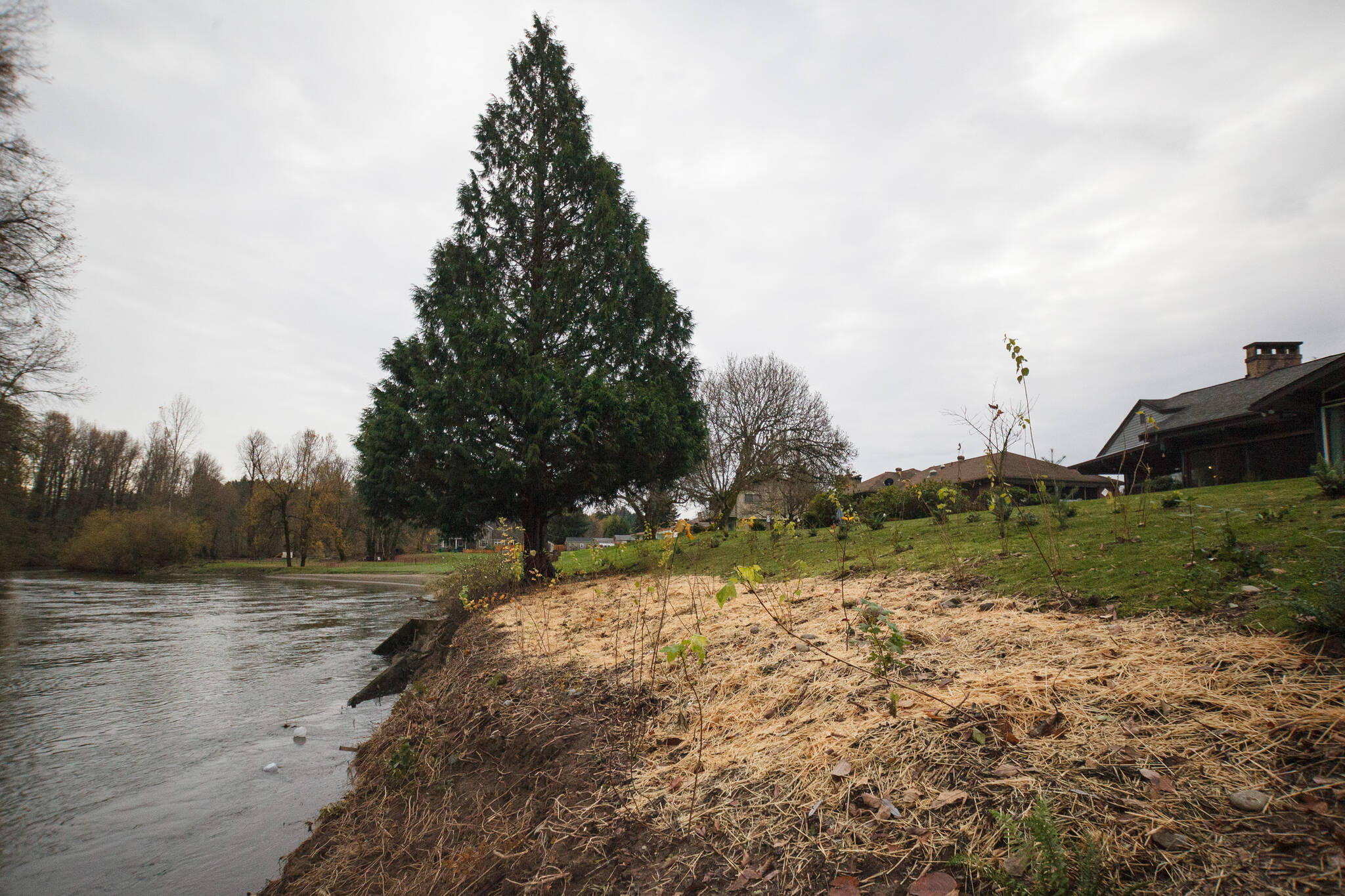Last year, when Don and Janet Crawley moved into their home on the Green River in Auburn, they fell in love with the natural beauty of the river in their backyard. They could look outside and see salmon jumping in the river.
There was just one problem — English ivy, Himalayan blackberry bushes and their grass lawn looked unnatural on the riverbank.
The Crawleys are concerned about the environment and knew something should be done about the invasive species in their backyard.
“We were trying to figure out what to do, just because we didn’t know how to take care of property adjoining a river,” Don said.
They started researching how to take care of riverfront property and came across the King Conservation District’s website about the Riparian Habitat Improvement Program. Don and Janet contacted Ashley Allan, the program coordinator, and began talking about making improvements to their backyard to make it better for the river and wildlife, Don said.
“We were really interested in working with King Conservation, with Ashley and her program because they talked about restoring all of this to help with the birds and the salmon and the river ecology, and that’s really important to us,” Janet said.
Allan’s program essentially removes invasive plant species such as English ivy and Himalayan blackberries on riverbanks and replaces them with native species.
Invasive species have two main negative effects on river ecosystems, Allan said. The first is that they aren’t good food sources for animals when compared to native plants. The animals and plants that are native to this area evolved together over millennia so animals actually prefer native species, Allan said.
“There’s actually been studies that show if given the choice between fruits on a native plant versus those on an invasive plant, our native fauna will actually prefer the native plants,” Allan said.
The second negative effect invasive plants have on river ecosystems is erosion, Allan said. The root systems of invasive plants like ones in the Crawleys’ backyard aren’t as deep or complex as the root systems of native plants.
“Although English Ivy was covering the bank, there was erosion happening, we just can’t see it,” Allan said.
Around this time last year the Crawleys and Allan began making a plan on how to improve the Crawleys’ backyard. They had three goals in mind for the project: improve the soil stability of the bank to reduce erosion, increase habitat value for fish and wildlife, and make their backyard enjoyable.
“One of the things we really appreciated about working with Ashley was she really recognized that there were some human needs here too,” Don said. “Ideally for habitat purposes, we’d get rid of the lawn, but we kind of wanted a little lawn left, so she was willing to work with us on that.”
With all of those goals in mind, Allan’s team got to work removing the invasive species and planting native ones. They planted over 200 native plants across the back quarter of the Crawleys’ backyard, Allan said. Some of the species planted include red osier dogwood, evergreen groundcover, snowberries and sword ferns.
They intentionally selected plants that flower and fruit at different times of the year to provide birds and other animals year-round food, Allan said. For example, the snowberry plants hold on to their white berries through the winter, whereas most other plants drop their berries.
Allan and her team chose the position of plants with views in mind. For instance, they placed the taller plants lower on the riverbank so they wouldn’t obstruct the view as much, Allan said.
They left a corridor of grass that leads to a patch of grass right on the riverbank so the Crawleys can still enjoy their view, Don said.
Allan’s program offers services to anyone who owns land that has an aquatic ecosystem on it, whether it be a wetland, a pond or the Green River, Allan said.
With most projects, Allan and her team provide the homeowners with resources and information and let them do the actual yard work and planting. However, in some cases, such as the Crawleys, the project calls for more work than the homeowners are able to complete, in which case Allan’s team takes over.
“In special cases, like this one where the landowner is interested in more assistance from KCD where it’s something where they don’t think they can do the work on their own and KCD sees a lot of value in the project, that’s were KCD can partner to offer the funding and project installation assistance,” Allan said.
The Crawleys’ desire to improve their backyard came from a feeling of duty to preserve nature, they said.
“I have a desire to be an active part of preserving nature, so a huge amount of my interest is doing things to restore it,” Janet said. “I wanted it to help provide a future for the salmon and the wildlife.”
They also see this as an opportunity to do their part in combating climate change, Don said.
“It’s easy to get overwhelmed thinking about climate change and the mess that parts of the environment are in, and when you get overwhelmed by that you think, well what can I do?” Don said. “This is something that it’s not a little thing, it’s not a huge thing, but it’s certainly more than a little thing that can be our contribution to solving that problem.”
Although they’ve already planted over 200 plants, there’s still more work to be done, Allan said. Currently, all of the plants are planted in rows right in the grass. Soon they will lay down cardboard and mulch to kill off the grass and help the plants grow, Allan said.
If you’re interested in learning more about improving your backyard, visit the King Conservation District website at http://kingcd.org.



